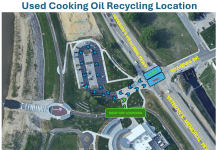The mission of the U.S. Environmental Protection Agency (EPA) is to protect human health and the environment, and during this time of unprecedented public health concerns, that mission is even more critical. On March 26, EPA released a temporary policy regarding the agency’s enforcement of environmental legal obligations during the COVID-19 pandemic. This temporary policy is not a license to pollute.
We strongly encourage the press to actually read EPA’s Temporary Policy before repeating reckless propaganda about it. Instead of including factual information about the policy, outlets such as E&E News, The Hill , the AP, and the New York Times are relying on sources who falsely claim that the policy provides a blanket waiver of environmental requirements or creates a presumption that the pandemic is the cause of noncompliance.
Here are some of the facts that have been conveniently left out of the press narrative:
The policy says that EPA will not seek penalties for noncompliance with routine monitoring and reporting requirements, if, on a case-by-case basis, EPA agrees that such noncompliance was caused by the COVID-19 pandemic. Regulated parties must document the basis for any claim that the pandemic prevented them from conducting that routine monitoring and reporting and present it to EPA upon request. This action was necessary to avoid tying up EPA staff time with questions about routine monitoring and reporting requirements and instead allow EPA to focus on continued protection of human health and the environment.
The policy does not say that the COVID-19 pandemic will excuse exceedances of pollutant limitations in permits, regulations, and statutes. EPA expects regulated entities to comply with all obligations and if they do not, the policy says that EPA will consider the pandemic, on a case-by-case basis, when determining an appropriate response. Further, in cases that may involve acute risks or imminent threats, or failure of pollution control or other equipment that may result in exceedances, EPA’s willingness to provide even that consideration is conditioned on the facility contacting the appropriate EPA region, or authorized state or tribe, to allow regulators to work with that facility to mitigate or eliminate such risks or threats.
EPA has been inundated with questions from both state regulators and the regulated community about how to handle the current extraordinary situation where contractors are not available because they cannot travel, state and local governments are imposing stay at home orders, and the number of people who have contracted COVID-19 and are in quarantine is rising. EPA developed the Temporary Policy to allow EPA to prioritize its resources to respond to acute risks and imminent threats, rather than making up front case-by-case determinations regarding routine monitoring and reporting. The development of the policy was a group effort, involving multiple calls and with and drafts shared among EPA staff and managers, both career and political, at both headquarters and in the regions.
It is important to note EPA expects regulated facilities to comply with regulatory requirements, where reasonably practicable, and to return to compliance as quickly as possible, once the COVID-19 threat is over. Additionally, the policy makes clear that EPA expects operators of public water systems to continue normal operations and maintenance during this time, as well as required sampling, to ensure the safety of vital drinking water supplies.
The measures in this policy are temporary and will be lifted as soon as normal operations can resume, which may occur sooner in some locations than others. We take our environmental mandate to protect human health and the environment very seriously and will continue to carry it out during this time.




